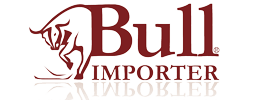Popular color names are not precise and can be interpreted in various ways. Our manufacturer of products in Asia needs to know exactly the color to use in the production of the merchandise. Using internationally standardized color guides, such as RAL and Pantone*, prevents unpleasant surprises when ordering prototypes on the material to be colored.The color of objects depends on the electromagnetic waves that each one absorbs or reflects. Depending on the material and the medium in which a color is used, its perception varies greatly. However, choosing the right color for each material is a key factor in obtaining a result consistent with the design or the original idea that we commission to our manufacturer of products in Asia.Standardized color guides guarantee the exact reproduction of colors in the products we commission to our manufacturer in AsiaIt is a mistake to order a product in pistachio, navy blue, or fuchsia from the supplier in Asia because it gives them the freedom to choose a different shade and intensity of green or yellow, blue, or pink that will have nothing to do with what the importer desires. For this reason, the most correct (and also the most reliable) thing is to define the color based on a standard model that guarantees exact reproduction.Color models are used to establish a unique common reproduction space on different media, such as plastic, paper, paint, or fabric. To place orders with our manufacturer of products in Asia, the most commonly used color models are RAL and Pantone.
RAL color model
The RAL color model was created in Germany in 1927 to define colors using codes. Initially, the RAL table consisted of only 40 colors, but today there are many more. Its codes consist of the word RAL followed by 4 digits. The first of them defines the color range (red, black, blue…) and the following ones serve for the range. Each color is identified with a unique name.This color naming system is mainly used in paints and coatings, making it the most popular standard in architecture, construction, and industry. The RAL guide establishes unique denominations for different colors and their corresponding Spanish translations.
Pantone color model
The Pantone color definition system is the most recognized and used worldwide, mainly in graphic arts. The popularity of this system has led the creating company to produce annual guides with the colors that will be trends in fashion and decoration. Among all of them, they choose the color of the year.Each Pantone color is described by a number and some letters depending on the material where the color will be applied:
- M for matte finish
- C and CP for coated paper
- EC for European standard coated
- U and UP for textured paper
- TC and TCX for fabrics
- TPX for textile paper
- Q for opaque plastics
- T for transparent plastics
The visual effect of each color, as the Pantone guides record, depends on the material to which it is applied. Luminosity, tone, and brightness will change, as well as the degree of transparency. Depending on the surface to be painted, the chosen color composition will need more applications or more quantity of basic colors.Almost never does the color shown in the computer screen’s design resemble the final result. Hence, it is extremely important to order a prototype before starting mass production. The sample will apply the chosen color, and there will be time to correct it by accentuating the tones according to the official color guides.
* Pantone is a registered trademark cited as reference


